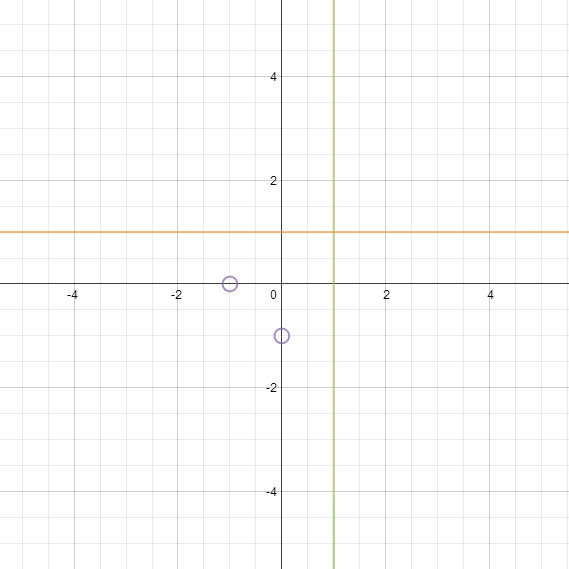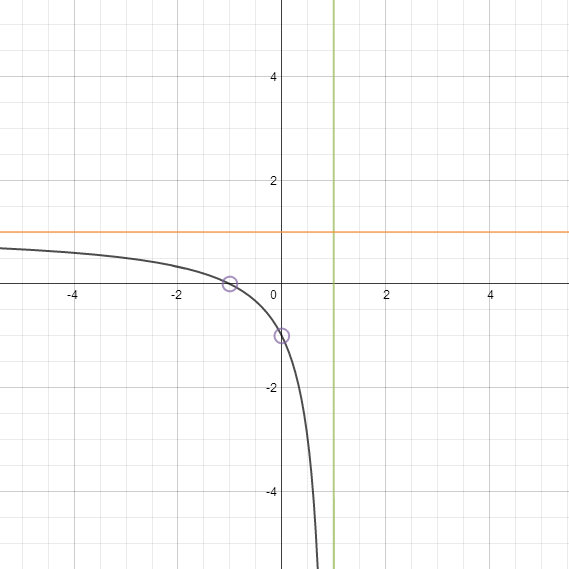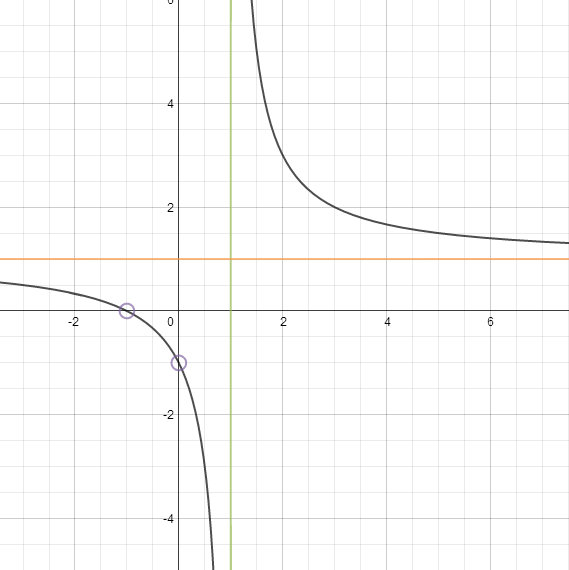Science:Math Exam Resources/Courses/MATH110/December 2010/Question 09 (f)/Solution 1
First we draw the asymptotes and x- and y-intercepts. Using parts (b) and (c) of the question, we know there are two asymptotes: x = 1 and y = 1, and two intercepts: (0, -1) and (-1, 0).
From this picture, it is pretty clear to know where the left half of the function should go - it must pass through the two intercepts, is decreasing, and goes towards the horizontal and vertical asymptotes.
The right half of the function is a little trickier, but not by much. It must either go in the upper-right or lower-right quadrant formed by the two asymptotes. However, in the lower quadrant, the function would have to be increasing. Thus it must be in the upper right quadrant, decreasing from infinity and going towards 1.


